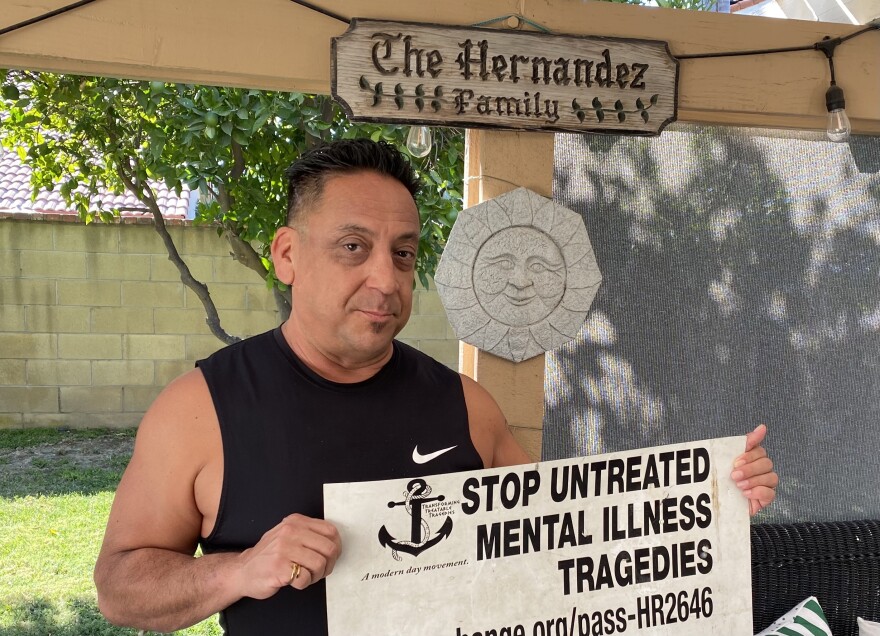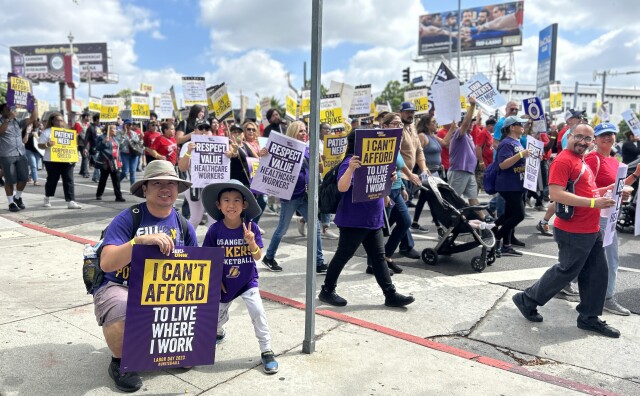L.A. County has a woefully inadequate number of mental health treatment beds. Providers, advocates and politicians regularly bring it up when talking about jail overcrowding and the state’s homelessness crisis.
Experts link the bed shortage in part to an obscure rule that was baked into the foundation of the federal Medicaid program back in 1965.
The Institutions for Mental Disease (IMD) exclusion bars any facility focused on treating adults with mental illness from receiving Medicaid dollars if it has more than 16 beds.
The intent of the exclusion was to move away from the large asylums of the time, some of which had become notorious for inhumane treatment, said Michael Gray, legislative and policy counsel at the Virginia-based Treatment Advocacy Center.
The idea was to “disincentivize institutionalization,” he said.
The hope was that smaller, more community-based facilities would spring up around the country, offering an alternative to the large institutions that locked people away from society and often mistreated them. But the number of smaller facilities needed to make up for the closure of larger ones never materialized.
We were so averse to asylum, but now we have the open air asylum of the streets and the closed asylum of the jail.
“No one is building a medical facility that has 16 patients at a time, it doesn’t make any sense,” Gray said. “It’s just too small. If I were someone who was trying to put psych hospitals out of business, I would make it a number that small.”
Experts estimate California should have at least 50 psychiatric inpatient beds for every 100,000 people. According to the most recent data, from 2016, it only had about 17.
‘Painfully Inefficient’
In L.A. County, Department of Mental Health Director Jonathan Sherin said he’s working with about 4,000 treatment beds — about half of what is needed.
“The IMD exclusion issue is a massive one,” he said.
While Sherin doesn’t want to see a return to the mass warehousing of people living with serious mental illness, he says a balance needs to be struck.
“We were so averse to asylum, but now we have the open air asylum of the streets and the closed asylum of the jail,” Sherin said.
Here’s an example of how the IMD exclusion influences the mental health system: To get federal funding for the 80 beds at L.A.’s new Restorative Care Village, Sherin said the county has to have five different 16-bed units, with five different operators.
“That’s just painfully inefficient,” he said.
Mary Palafox, chair of the board of the Schizophrenia and Psychosis Action Alliance, believes the disparity between the care provided for physical ailments and that for so-called diseases of the mind is discriminatory.
“If you didn’t have a bed for a heart attack, you would get sued if you didn’t provide care,” she said.
Palafox argues that doctors routinely discharge mental health patients too soon, deeming them safe to return home.
“If they were honest, lots of times they might say there was no bed,” she said.
A bill has been introduced in Congress to repeal the IMD exclusion. But so far it only has nine co-sponsors. The L.A. County Board of Supervisors and several advocacy groups, including the National Alliance on Mental Illness, have expressed support for the legislation.
Case In Point: Aaron Hernandez
Aaron Hernandez’s story is a case study in how hard it can be to get proper care for someone with a serious mental illness.
Growing up in Ontario, Hernandez was like any other kid growing up in that land of suburban cul-de-sacs. He liked skateboarding and hanging out with his friends. But in his teenage years he was diagnosed with paranoid schizophrenia.
“He was hearing voices, he was delusional,” said his father, Anthony Hernandez.
“We just knew he was spiraling out of control,” he said. “We didn’t know whether he would land up dead or take his own life or hurt somebody else.”
Hernandez said he would sometimes have to call the police on his son. Several times, Aaron was placed on a 5150, a three-day hold during which a patient can receive treatment in a locked psychiatric facility. But the hospital stays were never enough to help Aaron get stable.
‘We Were Always Rushed Out The Door’
“We were always rushed out the door,” said Hernandez, frustration in his voice. “We knew our son wasn’t ready to leave, but we had no choice.”
Hernandez said he spent years pleading with county behavioral health workers and mental health providers to help his son.
In 2014, things reached a breaking point. In a state of psychosis, Aaron attacked his father with a kitchen knife. The right side of Anthony’s face still bears a scar. Aaron, now 26, was finally placed in a state psychiatric facility, where he has spent the past several years receiving treatment for his condition.
Anthony believes Aaron’s life might have turned out quite differently if he had received the treatment he needed.
“It’s too bad that this is not going to be the last story that you hear,” he said, fighting back tears. “Those of us that do have this ailment in our family seem to be the ones that need to say something about it ... to voice your frustration and your sadness.”
Hernandez and his wife, Cynthia, formed a group called Transforming Treatable Tragedies, with the mission of supporting legislation that makes treatment more accessible, such as the bill currently pending in Congress.
-
- Steinberg Institute website, links to mental health resources and care throughout California
-
- Institute on Aging's 24/7 Friendship Line (especially for people who have disabilities or are over 60), 1-800-971-0016 or call 415-750-4138 to volunteer.
-
- Los Angeles County Department of Mental Health, 24/7 Access Line 1-800-854-7771.
-
- The Crisis Text Line, Text "HOME" (741-741) to reach a trained crisis counselor.
-
- California Psychological Association Find a Psychologist Locator
-
- Psychology Today guide to therapist
-
If You Need Immediate Help
-
- If you or someone you know is in crisis and need immediate help, call the Suicide Prevention Lifeline at 988 or go here for online chat.
-
More Guidance
-
- Find 5 Action Steps for helping someone who may be suicidal, from the National Suicide Prevention Lifeline.
-
- Six questions to ask to help assess the severity of someone's suicide risk, from the Columbia Lighthouse Project.
-
- To prevent a future crisis, here's how to help someone make a safety plan.










